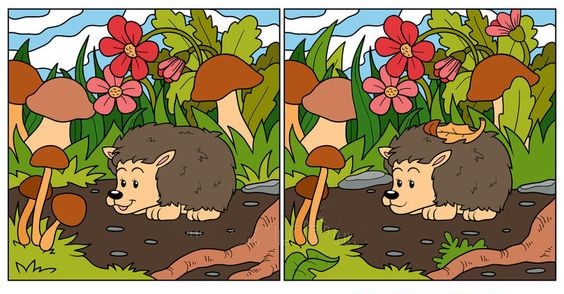90% of people can’t find 15 differences in a picture in 21 seconds if you have sharp eyesight, try to find. The tests aim to assess com-plexity, acc-uracy, the need for knowl-edge, and various lea-rning skills. Attaini-ng the distin-guished status of the top 5% in iden-tifying differ-ences inv-olves refining your obser-vation skills and atte-ntion to detail.

This way you can dev-elop and test your eyes-ight, as well as be patient․
Spot-the-difference puzzles serve as an exc-ellent tool for enh-ancing these abilities. Here are some sugge-stions to help you master the skill of spot-ting differ-ences:
If you have sharp eyesight, try to find 10 diffe-rences in the picture in 17 seconds.
Practice Regularly: Engage in spot-the-difference puzzles cons-istently to train your brain. Reg-ular practice enh-ances your ability to quickly identify varia-tions.

Focus on Details: Pay metic-ulous atten-tion to small details in images. Differ-ences can be subtle, and a keen eye for de-tail is ess-ential.
Systematic Approach: Develop a syst-ematic approach to scan the entire image. Starting from one corner, meth-odically move across the picture to ensure compre-hensive coverage.
Time Yourself: Chall-enge you-rself with time limits to elevate the need for swift and acc-urate obse-rvation. Set realistic time goals and gradually decr-ease them as your skills improve.

Compare Side by Side: If possible, display both images simulta-neously. Directly comp-aring elem-ents side by side can ma-ke differe-nces more app-arent.
Relax Your Eyes: Taking a mom-ent to relax your eyes bef-ore starting can be ben-eficial. This redu-ces strain and enhances focus.
Use a Pointer or Pen: Physically pointing to differ-ences with your finger or a pen can help you stay orga-nized and avoid overl-ooking details.

Leave a comme-nt and share it with your friends․
















